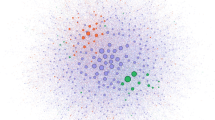Abstract
The philosophic spectator watches from a distance as a “disinterested” and impartial member of an audience (Arendt, Beiner (ed), Lectures on Kant’s political philosophy, University of Chicago Press, 1992; Kant, On history, Prentice Hall Inc, 1957). Judicial systems use many of the elements of the spectator in the concept of an eyewitness (Katz, Ohio arrest, search, and seizure, Banks-Baldwin, 2015) but, with increased video technology use, the courts have taken the witness a step further by hiring forensic video analysts. The analyst’s stance is rooted in objectivity, and the process of breaking a video down to its component parts to examine it, but is it based on the philosophic spectator? To better understand whether the forensic video analyst has adopted the stance of the philosophic spectator, this paper examines both the analyst and spectator, and discusses the implications for how we think and administer justice.
Similar content being viewed by others
References
Alawa, P. (2013). Martin Heidegger on science and technology: It’s implication to society. ISOR Journal of Humanities and Social Science., 12(6), 01–05.
Arendt, H. (1963). Eichmann in Jerusalem: A report on the banality of evil. Viking Press.
Arendt, H. (1992). In R. Beiner (Ed.), Lectures on Kant’s political philosophy. University of Chicago Press.
Arendt, H. (1958). The human condition. University of Chicago Press.
Barbour, I. (1991). Ethics in an age of technology: The Gifford lectures (Vol. 2). Harper.
Bilsky, L.Y. (1996). When actor and spectator meet in the courtroom: Reflections on Hannah Arendt’s concept of judgment. History and Memory, Vol. 8, No. 2, Hannah Arendt and “Eichmann in Jerusalem.” Indiana University Press. pp.137–173.
Birmingham, P. (1999). Hannah Arendt: The spectator’s vision. In J. J. Hermsen & D. R. Villa (Eds.), The Judge and Spectator: Hannah Arendt’s Political Philosophy. Peeters.
Conrad, S. (2013). The secret life of Walter Mitty [Film]. Red Hour Productions Samuel Goldwyn Films.
Department of Justice. (2014). Department of Justice report regarding the criminal investigation into the shooting death of Michael Brown by Ferguson. Missouri Police Officer Darren Wilson.
Dreyfus, H. (1991). Being-in-the-world: A commentary on Heidegger’s being in time, Division I. The MIT Press.
Fallis, D. (2020). The epistemic threat of deepfakes. Philosophy & Technology. Springer Nature B.V.
Forensic Video Solutions (2019). http://www.forensicvideosolutions.com/expert-instruction/
Garrett Discovery (2019). https://www.garrettdiscovery.com
Gendlin, E. (1962). Experiencing and the creation of meaning. Northwestern University Press.
Heidegger, M. (1962). Being and time. (Trans by J. Macquarrie and E. Robinson). Harper & Row.
Heidegger, M. (1977). The question concerning technology and other essays. Trans. & Ed. W. Lovett. Harper and Row.
Hermsen, J. J. (1999). “Who is the spectator? Hannah Arendt and Simone Weil on thinking and judging.” In J. J. Hermsen & D. R. Villa (Eds.), The Judge and Spectator: Hannah Arendt’s Political Philosophy. Peeters.
Kant, I. (2001). Critique of judgment. Basic writings of Kant. Random House.
Kant, I. (2015). Critique of judgment: Theory of the aesthetic judgment and theory of the teleological judgment. Trans. Bernard, J.H. E-artnow.
Kant, I. (1957). On history. Prentice Hall Inc.
Katz, L. (2015). Ohio arrest, search, and seizure. Banks-Baldwin.
McGinty, T. (2015). Cuyahoga County Prosecutor’s report on the November 22, 2014 shooting death of Tamir Rice. Office of the Prosecuting Attorney. http://prosecutor.cuyahogacounty.us/pdf_prosecutor/en-US/Rice%20Case%20Report%20FINAL%20FINAL%2012-28a.pdf
Merleau-Ponty, M. (1964). “Eye and Mind.” In Primacy of perception: and other essays on phenomenological psychology, the philosophy of art, history and politics. Northwestern University Press.
Palmer, K. (2015). “Cleveland boy’s shooting by police ‘unreasonable;’ family experts.” Reuters.
Piccorelli, J. T. (2014). The aesthetic experience and artful public administration. Dissertation. Cleveland State University. https://etd.ohiolink.edu/apexprod/rws_etd/send_file/send?accession=csu1408765860&disposition=inline
Piccorelli, J. T., & Elias, M. V. (2018). Integrating video technology and administrative practice in policing: A phenomenological expose. International Journal of Organizational Theory and Behavior, 21(4) (winter). https://doi.org/10.1108/IJOTB-03-2018-0023
Piccorelli, J. T., & Stivers, C. (2019). Exiled to main st.: How government’s use of social media diminishes public space. Journal of Public Affairs, 19(4). https://doi.org/10.1002/pa.1955
Piccorelli, J. T., & Zingale, N. C. (2018) Dementors circling higher education: Countering the administrative mood (“Stimmung”) of empirical science. Administrative Theory and Praxis, 40(3). https://doi.org/10.1080/10841806.2018.1485453
Ratcliffe, M. (2008). Feelings of being: Phenomenology, psychiatry, and the sense of reality. Oxford University Press.
Schutz, A. (1970). On phenomenology and social relations: Selected Writings. University of Chicago Press.
Taminaux, J. (1999). “Time and the inner conflict of the mind.” In J. J. Hermsen & D. R. Villa (Eds.), The Judge and Spectator: Hannah Arendt’s Political Philosophy. Peeters.
Waldo, D. (2007). The administrative state: A study of the political theory of public administration. Transaction Publishers.
Weidenfeld, M. C. (2012). Visions of judgment: Arendt, Kant, and the misreading of judgment. Political Research Quarterly., 66(2), 254–266.
Vargish, T., & Mook, D. E. (1999). Inside modernism: Relativity theory, cubism, narrative. Yale University Press.
Villa, D. R. (1999). “Thinking and judging.” Eds. Hermsen, J. J. and Villa, D. R. The Judge and Spectator: Hannah Arendt’s Political Philosophy. Belgium: Peeters. 27-CR-20–12646: State vs. Derek Chauvin. https://www.mncourts.gov/media/StateofMinnesotavDerekChauvin
Acknowledgements
The author would like to thank Camilla Stivers, Gregg Cawley and the Wyoming Institute for Humanities Research (WIHR) for their review and helpful feedback of an earlier version of the manuscript.
Author information
Authors and Affiliations
Corresponding author
Additional information
Publisher’s Note
Springer Nature remains neutral with regard to jurisdictional claims in published maps and institutional affiliations.
Rights and permissions
About this article
Cite this article
Piccorelli, J.T. The Judging Spectator and Forensic Video Analysis: Technological Implications for How We Think and Administer Justice. Philos. Technol. 34, 1517–1529 (2021). https://doi.org/10.1007/s13347-021-00470-7
Received:
Accepted:
Published:
Issue Date:
DOI: https://doi.org/10.1007/s13347-021-00470-7




